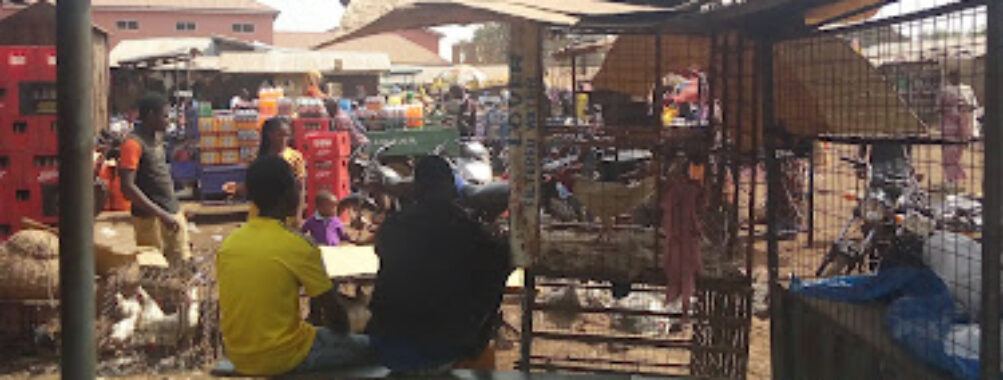
Aboabo Market
“`html
Table of Contents
Description
Aboabo Market in Tamale, Ghana, isn’t the kind of place you just stroll through once and forget—it sticks with you. The air hums with chatter, bargaining, and the occasional laughter that spills from one vendor’s stall to another. It’s not polished or overly touristy, and that’s exactly what makes it so magnetic. The market feels real—alive with the pulse of everyday life in northern Ghana. You’ll find everything from fresh produce and handwoven fabrics to spices that hit you with their aroma long before you see them. And honestly, that’s part of the charm: it’s a sensory overload in the best way possible.
The market isn’t perfect—few truly local markets are. It can be crowded, a bit chaotic, and sometimes the heat makes you wish you’d brought one more bottle of water. But it’s also welcoming. Locals often greet visitors with a mix of curiosity and warmth, and if you take the time to chat, you’ll likely leave with more than just a few souvenirs—you’ll walk away with stories. The place is accessible too, with wheelchair-friendly entrances and parking, which isn’t something you find everywhere in Ghana. And yes, you can even pay using your phone thanks to NFC mobile payment options, which makes transactions smoother than you might expect in such a traditional setting.
There’s a kind of rhythm to Aboabo Market that pulls you in once you settle into it. You start noticing the small things—the way sunlight filters through the canopies, the bright colors of kente cloth hanging beside stacks of smoked fish, and the way kids weave through the crowd like they’ve known every shortcut since birth. It’s a place that teaches patience and rewards curiosity. And if you’re a traveler looking for a slice of authentic Ghanaian life, this market delivers exactly that—unfiltered and full of character.
Key Features
- Large variety of goods, from textiles and spices to local produce and handmade crafts
- Wheelchair-accessible entrances and designated parking areas
- Accepts NFC mobile payments for easy transactions
- Friendly local vendors who often enjoy sharing stories about their products
- Authentic atmosphere reflecting the daily life of Tamale residents
- Opportunities for photography and cultural immersion (with permission, of course)
- Affordable prices, though haggling is common and part of the fun
Best Time to Visit
If you ask around, most locals will tell you mornings are best. The air is still cool, the produce is fresh, and the crowds haven’t yet hit their midday peak. Visiting early also gives you a better chance to chat with vendors before the day gets hectic. I once arrived just after sunrise, and the place had this calm buzz—like everyone was gearing up for the day ahead. By noon, it’s a different story: noise, energy, and a sea of people moving in every direction.
Weather-wise, the dry season (roughly November to March) makes exploring a lot more comfortable. The rains can turn parts of the market muddy, though even then, locals carry on without missing a beat. If you’re the type who enjoys watching life unfold in its rawest form, the market on a rainy day has its own kind of beauty—umbrellas popping open, laughter cutting through the downpour, and vendors still selling with unstoppable determination.
How to Get There
Aboabo Market sits right in Tamale, so getting there isn’t too complicated. If you’re staying in town, you can hop on a local taxi or even a motor tricycle—what locals call a “yellow yellow.” They’re cheap, quick, and honestly, a fun way to see the city. Just tell the driver you’re heading to Aboabo Market, and they’ll know exactly where to go.
For those coming from further out, Tamale’s main transport station connects to most major cities in Ghana, including Accra and Kumasi. From there, taxis and ride-hailing options can get you straight to the market. Roads leading to the area are generally in decent condition, though traffic can get a bit tight during peak hours. If you’re not in a rush, take your time—half the experience is just watching the city’s rhythm unfold as you make your way there.
Tips for Visiting
First off, bring cash. Even though mobile payments are accepted, some smaller vendors still prefer good old-fashioned cedis. And don’t be shy about bargaining—it’s expected, and honestly, it’s part of the fun. Just do it with a smile; locals appreciate good humor more than hard haggling.
Dress comfortably and modestly. The market can get hot, dusty, and crowded, so breathable clothes and comfy shoes are your best friends. Keep your belongings close, not because the place is unsafe, but because it’s easy to get distracted by all the sights and sounds.
If you’re into photography, ask before snapping pictures. Some vendors love it, others not so much. A quick smile and a polite question go a long way. And if you’re adventurous with food, try some of the local snacks—fried plantain chips, roasted groundnuts, or spicy kebabs. They might not look fancy, but they taste incredible.
One more thing: take your time. Don’t rush through the aisles like you’re checking off a to-do list. The magic of Aboabo Market is in the moments you don’t plan—the spontaneous conversations, the unexpected finds, the laughter shared over a simple purchase. I’ve been to markets all over West Africa, but there’s something about this one that feels grounded, unpretentious, and deeply human.
So, whether you’re a first-time visitor to Tamale or a returning traveler looking to rediscover the city, Aboabo Market offers a slice of daily life that’s as genuine as it gets. It’s not just a place to shop—it’s a place to connect, learn, and maybe even fall a little bit in love with the rhythm of northern Ghana.
“`
Location
Places to Stay Near Aboabo Market
Find and Book a Tour
Explore More Travel Guides
No reviews found! Be the first to review!